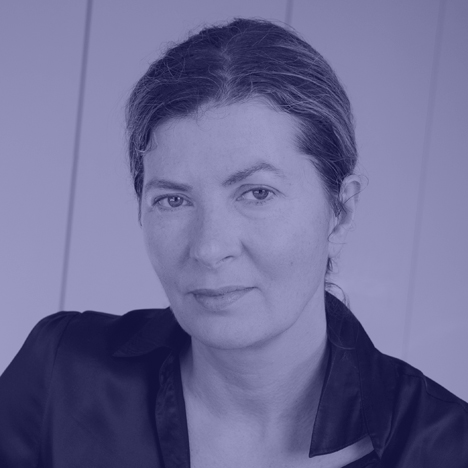
Ilse Crawford: "The interior is the life of the building"
Dezeen Book of Interviews: in the next extract from our latest book, British designer Ilse Crawford discusses Studioilse's work, design philosophy and the influence of her Scandinavian background.
Although often described as an interior designer, Crawford's portfolio contains projects ranging from a secluded garden for a Hong Kong restaurant to the conversion of a 100-year-old house in Stockholm into a boutique hotel.
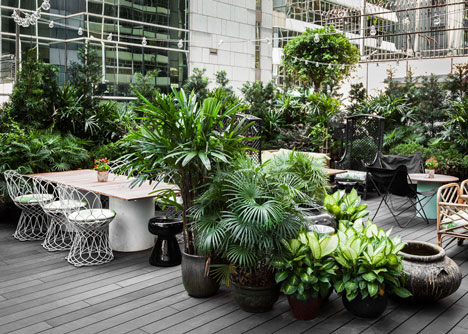
"As the head of Studioilse, I mostly design interiors. But, in fact, we do a lot more than that here," Crawford said. "Because, I think, interiors are ultimately where we live, they are a lot more than pieces of furniture. They're really about interior life, how we live as human beings."
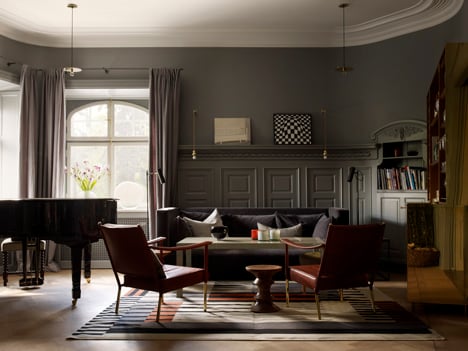
Dezeen's editor-in-chief Marcus Fairs interviewed Crawford in her London studio ahead of Inside Festival 2011, where she was responsible for heading up the jury.
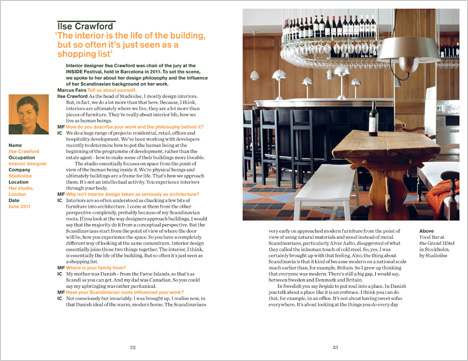
"My mother was Danish – from the Faroe Islands, so that's as Scandi as you can get. And my dad was Canadian. So you could say my upbringing was rather puritanical," she said.
"The thing about Scandinavia is that it kind of became modern on a national scale much earlier than, for example, Britain," Crawford said. "So I grew up thinking that everyone was modern. There's still a big gap, I would say, between Sweden and Denmark and Britain."
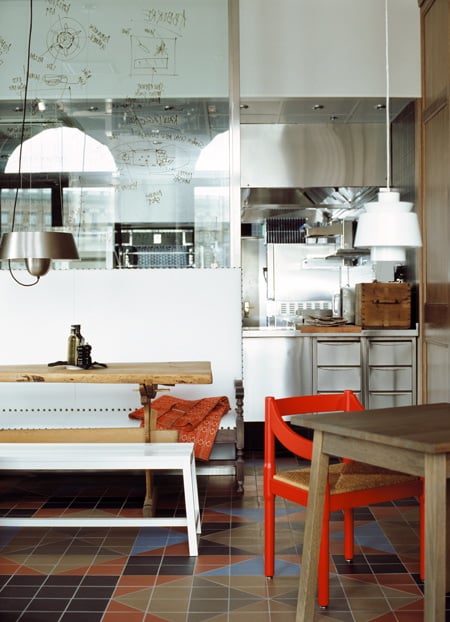
Crawford suggested that interior design is not simply a case of matching furniture with an overall design concept, but rather, it's about considering how a person will experience the room and their surrounding environment.
"The studio essentially focuses on space from the point of view of the human being inside it. We're physical beings and ultimately buildings are a frame for life," she said. "It's not an intellectual activity. You experience interiors through your body."
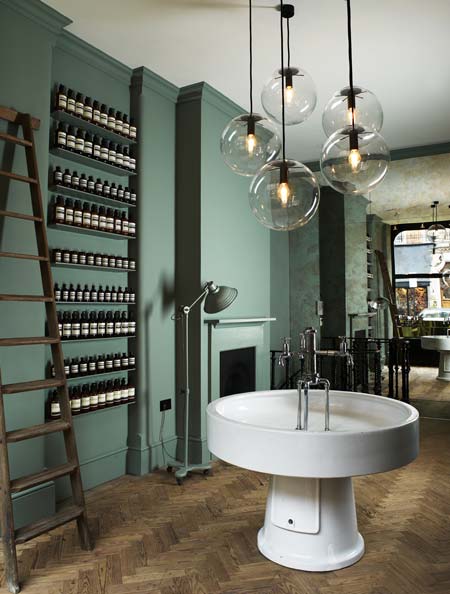
"If you look at the way designers approach buildings, I would say that the majority do it from a conceptual perspective," she added. "But the Scandinavians start from the point of view of where the door will be, how you experience the space."
"Interior design essentially joins those two things together. The interior, I think, is essentially the life of the building. But so often it's just seen as a shopping list."
Dezeen Book of Interviews: our new book, featuring conversations with 45 leading figures in architecture and design, is on sale now
Marcus Fairs: Tell us about yourself.
Ilse Crawford: As the head of Studioilse, I mostly design interiors. But, in fact, we do a lot more than that here. Because, I think, interiors are ultimately where we live, they are a lot more than pieces of furniture. They're really about interior life, how we live as human beings.
Marcus Fairs: How do you describe your work and the philosophy behind it?
Ilse Crawford: We do a huge range of projects: residential, retail, offices and hospitality development. We've been working with developers recently to determine how to put the human being at the beginning of the programme of development, rather than the estate agent – how to make some of their buildings more liveable. The studio essentially focuses on space from the point of view of the human being inside it. We’re physical beings and ultimately buildings are a frame for life. That’s how we approach them. It’s not an intellectual activity. You experience interiors through your body.
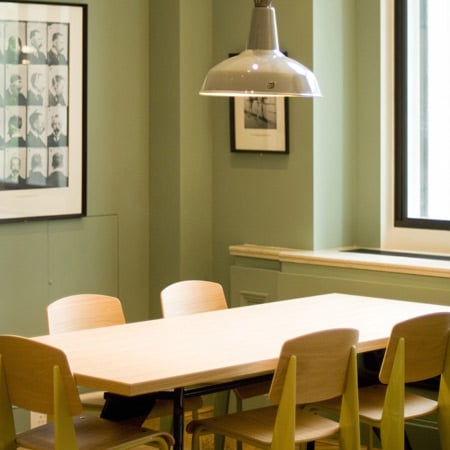
Marcus Fairs: Why isn't interior design taken as seriously as architecture?
Ilse Crawford: Interiors are so often understood as chucking a few bits of furniture into architecture. I come at them from the other perspective completely, probably because of my Scandinavian roots. If you look at the way designers approach buildings, I would say that the majority do it from a conceptual perspective. But the Scandinavians start from the point of view of where the door will be, how you experience the space. So you have a completely different way of looking at the same conundrum. Interior design essentially joins those two things together. The interior, I think, is essentially the life of the building. But so often it's just seen as a shopping list.

Marcus Fairs: Where is your family from?
Ilse Crawford: My mother was Danish – from the Faroe Islands, so that's as Scandi as you can get. And my dad was Canadian. So you could say my upbringing was rather puritanical.
Marcus Fairs: Have your Scandinavian roots influenced your work?
Ilse Crawford: Not consciously but invariably. I was brought up, I realise now, in that Danish ideal of the warm, modern home. The Scandinavians very early on approached modern furniture from the point of view of using natural materials and wood instead of metal. Scandinavians, particularly Alvar Aalto, disapproved of what they called the inhuman touch of cold steel. So, yes, I was certainly brought up with that feeling. Also, the thing about Scandinavia is that it kind of became modern on a national scale much earlier than, for example, Britain. So I grew up thinking that everyone was modern. There's still a big gap, I would say, between Sweden and Denmark and Britain.
In Swedish you say "besjala" to put soul into a place. In Danish you talk about a place like it is an embrace. I think you can do that, for example, in an office. It's not about having sweet sofas everywhere. It's about looking at the things you do every day and making them work on a human scale, like having a great kitchen, making the photocopy room fantastic, the possibility of, say, having movable shelving around you where you can put your objects and still have a sense of being connected to others. It's working out if you like the politics, the organisation of how you have conversations. It's having a common room rather than lots of conference rooms, which are ultimately rather confrontational.
Obviously you have to balance that with practical needs, but I think, historically, the tectonic, practical and functional have ended up driving the wagon, and ultimately you've got things the wrong way around. The design should be driven by life and the practical stuff should be the stuff that makes that happen, not the other way around.
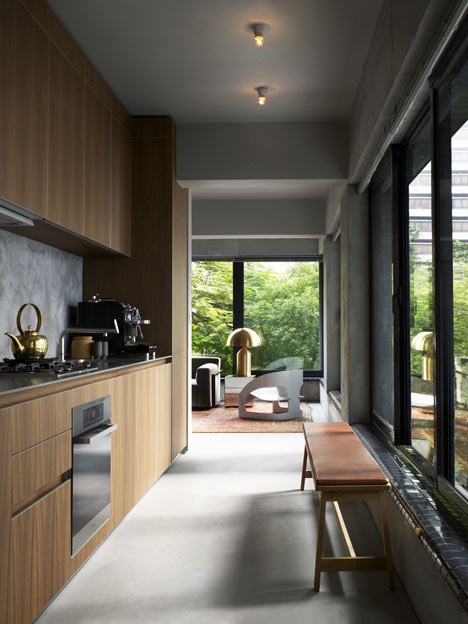
Marcus Fairs: Can you provide some examples of how you apply your approach?
Ilse Crawford: We put wellbeing at the core of all our projects, and when we talk about wellbeing, we certainly don't mean simply a spa. For example, we did a small residential development in Hong Kong called TwoTwoSix Hollywood Road that was about making a connection to its location, so it didn't create a sort of black hole in the street, which is common in most developments there; the buildings are very introverted and you lose any sense of them being inhabited. Then, within the apartments, we started from the point of view of life. We gave them a strong material language, making sure there was the right combination of warm and cool materials, because we all want to have a tactile connection to where we live, right down to the finishes. We made sure the windows were fully openable. We had places where you could put things easily and practical stuff like lots of storage. That’s also part of being human.
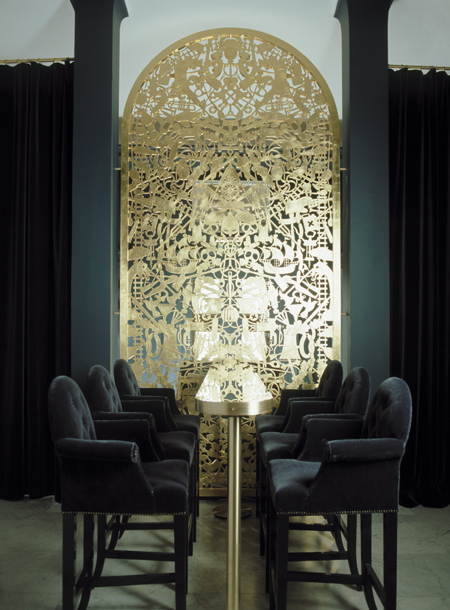
Another project we've done is Mathias Dahlgren's restaurant at the Grand Hôtel in Stockholm. I think it was one of our most effective projects. The starting point was good because Mathias really believed in the power of interiors and trusted us to interpret his philosophy of food in three dimensions. Because while he might be making the most amazing food, for people to fully understand it they need to feel it on all the other levels, to experience it. So it could be smelled, heard and felt.
It was two restaurants: a fine-dining restaurant for slow food and a food bar, which is a more everyday experience of the same food. It was fascinating having to do two expressions of the same man's food. One is about a long, drawn-out, sensual experience, and we put that behind a secret door, the opposite of what you might normally do to make it a special place. Then the food bar we made more robust in its materials, with encaustic tiles and wood. You can sit together; it's more masculine, you might say, but very much an expression of the ingredients and the way of cooking. And that's something that I think is interesting with interiors: you can take what's going on in one sense and translate it through to the other senses.
We had discussions around a few sixteenth-century block- board tables that we wanted to include. They were a touch wobbly and Mathias was quite worried about that, because of course chefs are quite worried about everything being perfect.
We just said, "Let's try it for a month. We'll give you a few words to say when people sit down at this table: 'Look, this table has been around for 400 years and thousands of meals have been eaten on this table, and that's a connection to Mathias and the roots of his food.'" After that, everybody wanted those tables.
So I think the power of an interior to amplify and express the life of a place, the content, the brand is huge and so often underestimated – especially in very commercial, corporate situations. Of course it's understandable: you have quantity surveyors, you have project managers and so on who need to get things in on time and on budget. But what you end up with is a world with no identity that's absolutely uninhabitable.